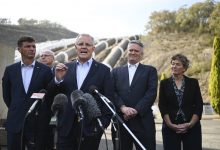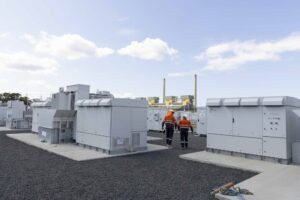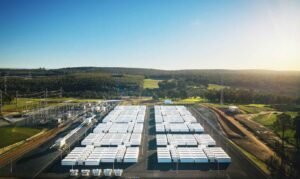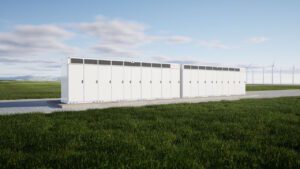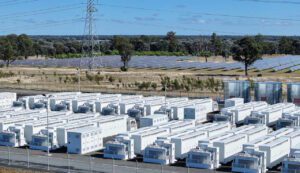Prime minister Scott Morrison has given the go-ahead to the Snowy 2.0 pumped hydro scheme, but it has needed an extra $1.4 billion of taxpayer’s money to get the pet project of predecessor Malcolm Turnbull – the man the Coalition dumped because they didn’t trust him on climate and energy policy – over the line.
Morrison and energy minister Angus Taylor rushed to the Snowy Mountains on Tuesday to make the announcement, the latest in a series to try and diffuse climate and energy policy as an election issue.
It follows the modest extension of the discredited Direct Action scheme, now rebranded as “Climate Solutions” fund, and a stream of other measures that will focus on energy efficiency, the vague promise of an electric vehicle strategy, and $56 million to “fast-track” Tasmania’s rival to Snowy 2.0 – the “Battery of the Nation” pumped hydro scheme and links to the mainland.
But here’s the thing. Like the Tasmania scheme, Snowy 2.0 only makes financial and environmental sense if the exit from coal is rapidly accelerated, because there is simply no place in the market for these schemes if coal generators remain.
The Coalition and its wholly owned Snowy Hydro are refusing to release the financial models that support the scheme, and there are still numerous environmental and regulatory hurdles to overcome.
The federal government has already spent $6 billion buying out the stake held by the NSW and Victoria governments, but the new $1.4 billion cash injection into Snowy Hydro from federal taxpayers funds bodes ill. It suggests that Snowy Hydro is struggling to make the numbers for Snowy 2.0 add up.
There is no doubt Snowy Hydro itself sees Snowy 2.0 as essential to its own survival, because it has relatively little of its own capacity compared to its retail and business market share, and is a victim to market trends. It hopes that the complex contracting it will be able to enter into with Snowy 2.0 will give it more control of its finances.
But will it make money? Snowy 2.0 is being sold on the basis that you “buy low”and use cheap excess power (either coal, or more hopefully wind and solar) to pump water up hill, and then let it roll down and spin the generators when the price is high and demand is peaking.
 But that hasn’t worked out so well over the last year. Data from the Australian Energy Market shows that the pumped hydro schemes that currently exist made virtually no margins from this activity. In the last quarter, they actually lost money and over the previous four quarters made virtually no money, AEMO data shows.
But that hasn’t worked out so well over the last year. Data from the Australian Energy Market shows that the pumped hydro schemes that currently exist made virtually no margins from this activity. In the last quarter, they actually lost money and over the previous four quarters made virtually no money, AEMO data shows.
It underlines the fact that what such schemes need is more volatility – and it will unlikely get that unless there is a big increase in the share of renewables, the sort of increase that the Coalition says would be “economy wrecking” if it takes place. Contracting will also play a critical role.
Paul Hyslop, from ACIL Allen, wrote a detailed analysis last year questioning the financial metrics of the Snowy scheme, which will deliver 2,000MW of pumped hydro capacity and 175 hours of storage. Hyslop said Snowy 2.0 would deliver a “fraction” of the assumed market benefits to its owner, and such a huge scheme could struggle against competing technologies.
Hyslop is not the only one to question the economic feasibility of Snowy 2.0, or its impact on emissions. Last year, Marsden mascons observed that the result of Snowy 2.0 would likely be to “improve the economics of coal-fired generation” without a significant increase in renewables.
ITK analyst and RenewEconomy contributor David Leitch observed in this piece, that the project would likely cause an increase in emissions unless there was a rapid increase in wind and solar.
Snowy Hydro sought to downplay those concerns, and insist that their goal was to increase wind and solar.
True, they announced late last year contracts with more than 930MW of wind and solar capacity that with firming from hydro would beat coal and gas on baseload costs.
But in keeping with the information blackout, they wouldn’t even reveal which projects had been contracted.Thanks to some detective work, we found out eventually.
The decision – with little explanation – to inject an extra $1.4 billion suggests that the concern about the economics of the project is justified and is shared by the Snowy board and the government
The total cost, as far as we know, will be around $4.5 billion. Taxpayers will now pay nearly a third of this.
And that does not include the around $2 billion required for new transmission to deliver the scheme to where it’s needed. That will also be paid by electricity consumers, and not by Snowy Hydro.
So, all up, taxpayers and consumers will foot at least half the bill, the government-owned utility the other half. Yet some suggest the overall bill could be significantly higher, up to $8 billion.
There is no doubt storage is needed in a high renewables grid, but neither the government nor Snowy Hydro have made the case that their’s is the best option, over competing pumped hydro and battery storage projects.
Yet they have sought to demonise batteries with some pretty silly modelling assumptions, repeated by Taylor on Tuesday of Snowy costing 50 times less than battery alternatives.
It’s a dubious claim to hang a multi-billion dollar investment on, but the impact of the government approval may be to make the market less interesting for battery investments, which was the general thrust of what was revealed in the first feasibility study.
This is a grab for market share, and a multi-billion bet that a 50-year investment will hold up against all the technology changes that might occur in the coming decades. The power grab may work for a decade or so, but beyond that there is the risk of this being a white elephant.
So there are two themes worth thinking about.
The support for Snowy 2.0 and Tasmania’s hydro “battery” underlines the bizarre nature of what the Coalition is proposing – professing to support coal fired generation and demonise wind and solar on one hand, and yet support vast multi-billion dollar budgets on the other hand that are based on the assumption that coal must be retired early.
The $56 million funding to fast track the Tasmania project is looking particularly bizarre as its financials depend on a) rapid exit of coal and high emissions targets, which the Coalition rejects, and b) assumes the government does no ahead with Snowy 2.0, but it now says that it will.
It also underlines that this government is about yet more state intervention in the market. Both the big pumped hydro schemes are from government owned generators – both will squeeze out private players and competing technologies, at least in the short term.
Many other pumped hydro projects will now likely re-assess and delay their investment, at least until after the next election and if and until a proper energy transition policy is put into place.
Meanwhile, the government is persisting with mandated pricing caps, would like to impose strict “big stick” and forced divestiture policies to those private players that do not toe its line, and is pushing to underwrite new 24/7 generation that appears to be an attempt to fund more coal investment.
That underwriting scheme – known as Fungi, or Federal Underwriting New Generation Investment, is now likely to fall by the wayside. with Taylor admitting on Tuesday that the government was unlikely to be able to complete contracts before the election campaign swings into action.

